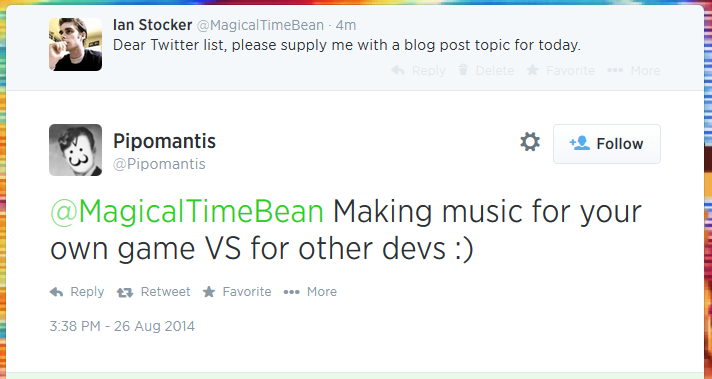With today’s work on Soulcaster mostly being behind-the-scenes stuff involving the new slotting equipment/inventory system, I figured I didn’t have much to say on that topic today. I decided to poll my Twitter list for topic ideas, and got several I could answer lightning-round style. Here goes.

On my own games, I get to pick whatever style I want, and have final approval. This does not necessarily make things any easier. Lack of constraints can be paralyzing for me, so I usually set up some artificial constraints before starting the score. On all four of my games so far, I’ve gone for something of a 90’s era redbook audio vibe. Soulcaster used Lagoon (SNES) as its main inspiration, Soulcaster II used Labyrinth (the movie), Escape Goat used Castlevania: Curse of Darkness, and Escape Goat 2 drew a bit from Bayonetta. All of the instrument sets were restricted to software versions of hardware that was available in the 80’s and 90’s.